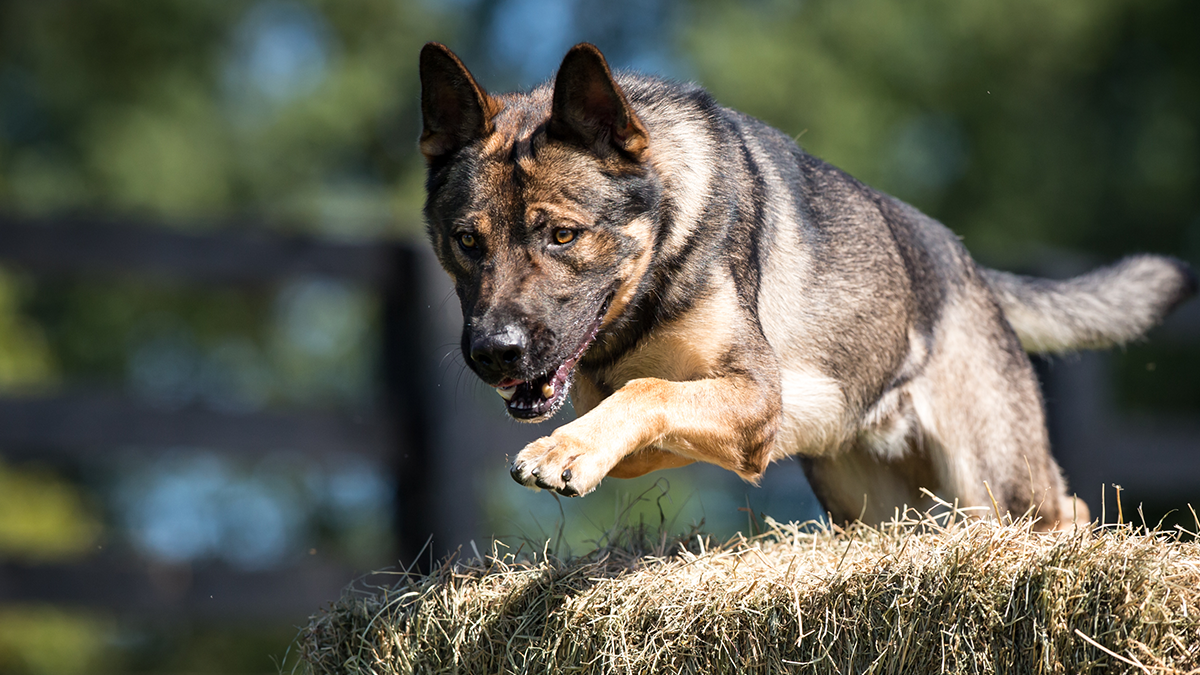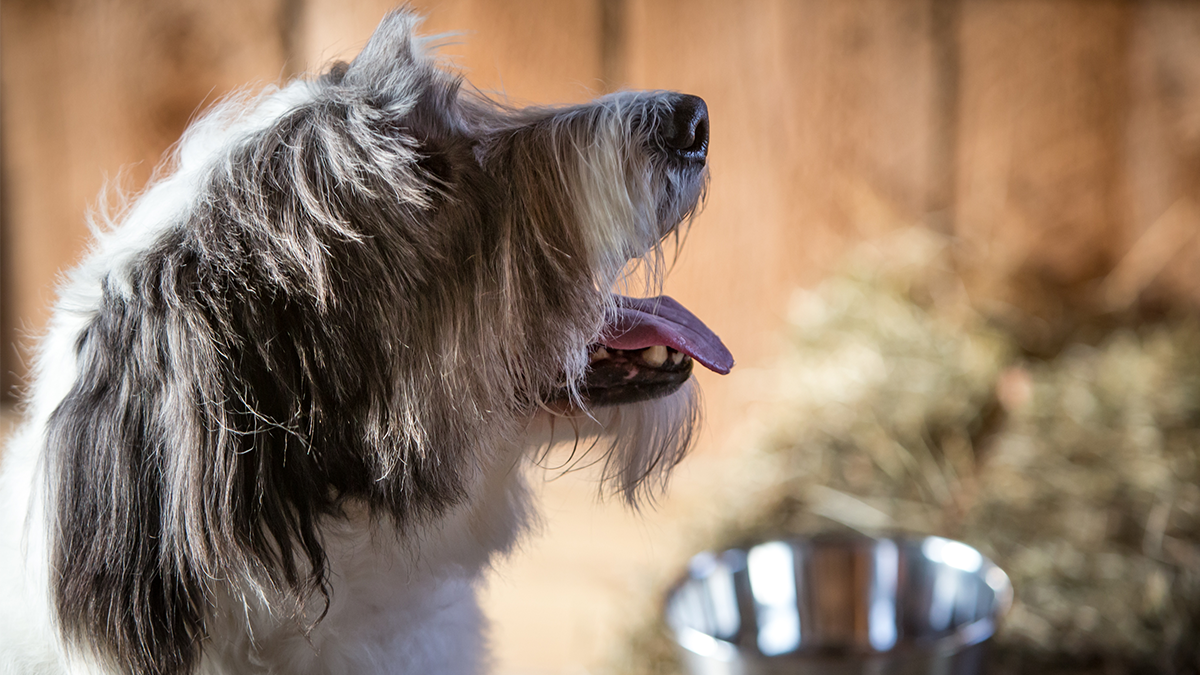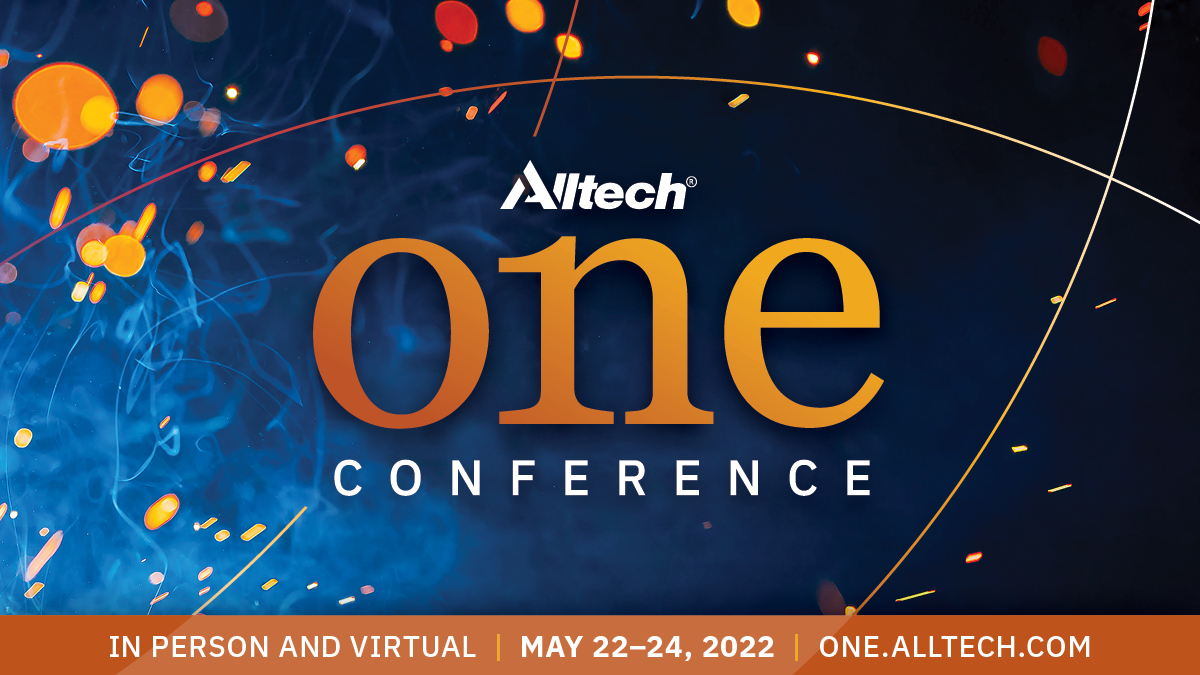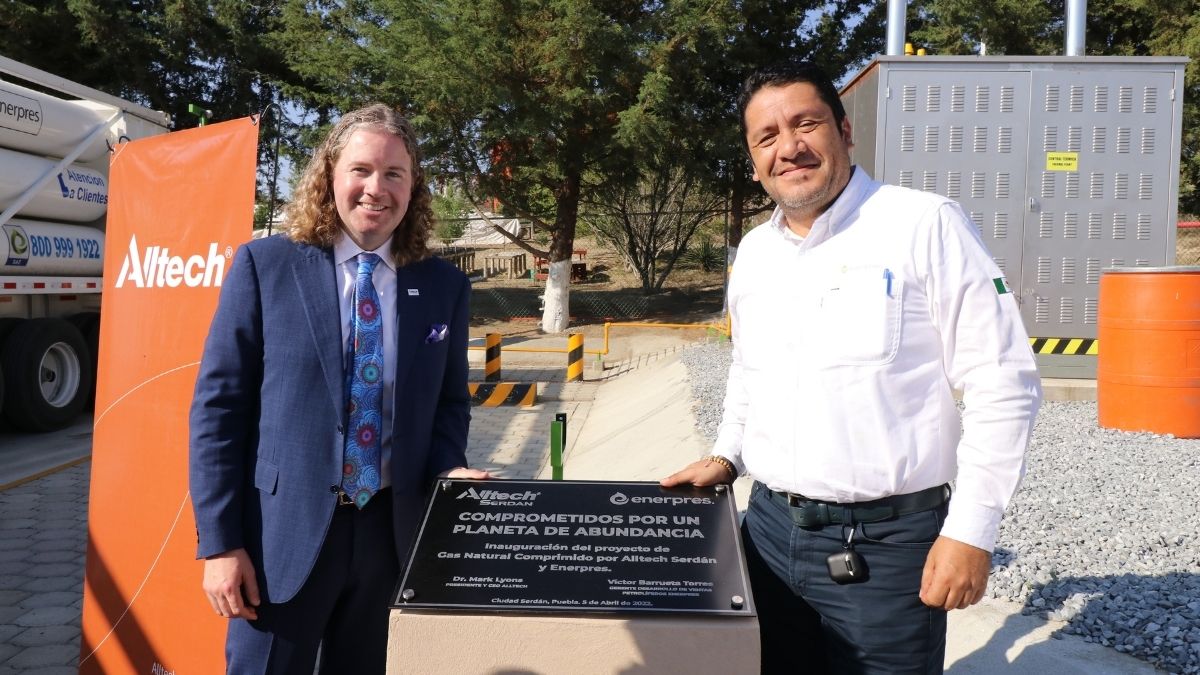How do we help our pets build and maintain optimal brain health?
How can pet owners optimize their pets' brain health from a young age? Dr. Joli Jarboe, a veterinary neurologist and neurosurgeon, joins the Ag Future podcast to discuss the importance of building and maintaining cognitive health at all stages of your pet's life.
The following is an edited transcript of the Ag Future podcast episode with Dr. Joli Jarboe hosted by Tom Martin. Click below to hear the full audio or listen to the episode on Apple Podcasts, Spotify or Google Podcasts.
Tom: Welcome to Ag Future, presented by Alltech. Join us from the 2022 Alltech ONE Conference as we explore opportunities within agri-food, business and beyond.
From brain development in puppies and kittens to staying sharp and maintaining cognitive function in senior pets, a healthy brain is key for a healthy pet. How do we help our pets build and maintain optimal brain health?
I'm Tom Martin for the Alltech Ag Future podcast series. I have those questions and a lot more for Dr. Joli Jarboe, a veterinary neurologist and neurosurgeon based in Central Kentucky and serving patients across the United States. Welcome, Dr. Jarboe.
Joli: Thank you so much for having me.
Tom: We're here in Kentucky at the annual Alltech ONE Conference. I understand that this is your home state and that you are an Eastern Kentucky University graduate?
Joli: I am. I had an animal science degree (that I received in), let's see, 1987, I believe, and a minor in biology.
Tom: You caught the veterinarian bug at an early age.
Joli: Oh, yeah, absolutely. Some jobs are more professional; veterinary medicine was really a calling. There wasn't a time in my life I can recall not having a pet or not tending to strays or wounded animals outside (and) dragging it home. My dad always jokes — I nursed a litter of mice, field mice I found in our utility room. I raised those up and then turned them loose in our barn. He was like, "I'm putting out mouse bait, and here you are raising them."
But I started to work for a vet when I was 11. There was a general practitioner in my hometown who just graduated, opened up a practice, and he had put himself through school or supplemented his income by raising canaries. So, I ended up cleaning cages for something like 110 canaries. I weaseled my way in and, (in) short order, was going on farm calls with him in the middle of the night, delivering baby pigs, helping with calf exams and things like that, because I had tiny hands at 11 and worked for him forever. There was no going back.
Tom: It just went from there.
Joli: Yeah. There was nothing I could have been — nothing else I could be but this.
Tom: Well, turning to what you do, is brain development and health even on the radar of most pet owners? And why should it be?
Joli: I think there's a small percentage of people that are more aware of it. The pet owner or pet parent is becoming more and more educated through the internet and Google searches and becoming more informed. I think it should be more on the radar, though. As I've said in my lecture (at the Alltech ONE Conference) earlier today, the medical field — human medicine and veterinary medicine were taught to treat disease states. I think that we need to have a revamping of our education system and (should be) trying to learn how to promote improved cellular function so that we prevent the disease state.
There's a lot of things that we can do early on in our core development, from the time mom meets dad, and you have fetal development to the weaning process to (the) growth process in our animals that can delay neurodegeneration. It happens. Then, when we're born, we (can) starve to death. That's a gloom-and-doom mindset, but it's true. If we can do things to be proactive and slowing down those neurodegenerative processes, decreasing just natural inflammation, we'll go a long way in promoting prolonged, improved brain health and cognition.
Tom: What are the practical benefits of maintaining healthy cognitive function in our pets?
Joli: Well, I think, to have a happy, stimulated, engaged pet — these pets are, in many instances, (like) a spouse, their spouse spot-holder or a child to owners, to the pet parent. I think, to keep them engaged, I think promoting brain health allows them to be the most interactive (and) have the best effect that they can. So, promoting play, teaching — we know (the benefits of) owning pets. The pet-owning population has less triglycerides and (lower) cholesterol and have less heart disease than non-pet-owning people. They help our health as well and help us be more rounded, balanced people. I think it's a yin-and-yang relationship.
Tom: What about downsides to that? What if we don't pay attention to our cats’ or our dogs’ brain health?
Joli: Well, I think you're just going to have someone taking up space.
Tom: Eating food.
Joli: Eating food, just having a less of a fulfilled life.
Tom: What are some typical neurological issues that you encounter and treat? (Let’s look at the case of) the cocker spaniel Casper, for example.
Joli: Well, Casper came to see me on — we had a blizzard situation in one of the hospitals that I worked at. He came, and it was a race to try to perform surgery on him for a ruptured disc. He was paralyzed, so he needed surgery. The cannabinoids or supplements that I advocate a lot (for), they help to promote mood-stabilizing effects. When these animals that come to me for spinal cord injury, whether it's in the neck or their back or they have nerve injury, a big portion of their rehabilitation is exercise restrictions. We've got to let the body heal and recover. The minute they start feeling better, they're going to jump off the couch, fall off the stairs and do something silly to reinjure themselves.
Unfortunately, a lot of these pets aren't crate-trained or aren't trained to be in a confined area. Giving them something like a hemp supplement helps to promote that mood-stabilizing effect, helps them deal with those internal anxieties. They will be a little calmer between their ears, a little happier between their ears. They also are potent — the cannabinoids are also potent pain-modulating systems, so they help affect decreasing pain in our body or our body's perception of it. Following a spinal surgery or inflammation with a disc rupture, those things can be quite beneficial. In addition to traditional anti-pain medicine and muscle relaxants, we can often use less of those with providing cannabinoid support.
Tom: How did you arrive at that?
Joli: Probably — gosh, it's probably been about 15 years ago. The general pet-owning population were bringing these supplements to me, and like everyone else in the medical profession, (I thought that) I know more than anyone else. I was very skeptical and poo-pooed this thing. But the great benefit — well, there are two things to touch upon.
Being a veterinary neurologist, a neurosurgeon, my pets, my patients can't speak. I'm basically a very skilled voyeur. I have to be very good at observational skills. That's number one in this equation. Number two, my patients don't have a placebo effect. I can tell you if an owner is giving a quality hemp oil or a quality supplement, regardless of what it is — say, CoQ10, B complex, L-carnitine, those kinds of things. I have an animal that I saw and examined that's doing X, Y and Z. (The) owner gives a supplement, or maybe I'm recommending it, and we see it back in two to four weeks. I see a difference in my hands, in my exam room. There's, again, no placebo effects. Animals are so true and pure. They may not be vocal by using words, but their body and how they move and interact is screaming to us if we're just quiet and listen and watch.
I think those are the two components: my ability to observe, being open-minded, and my pets showing me that, “Hey, these things are working. They’re beneficial.”
Tom: We tend to consider our pets members of our families. When they die, we grieve as though we lost a person. We feel like we've lost a family member. How do you help people face end-of-life decisions for their pets?
Joli: I have a different mindset, I think, than most of my peers. Because I have been in veterinary medicine for so long, I have a keen sense — and I'll try not to get teary-eyed on this, because I do feel so passionately about end-of-life decisions. I talk to owners a lot about this. Whether you have any religious beliefs or not, I think that these animals are the closest thing we have to divine presence on this world. It is our job and our responsibility to be their stewards. When we can't make them better, we can give them the most peaceful, dignified passing. I think that veterinary medicine is so much more humane — and (I) might spark some controversy in this next statement — but I think we are so much more humane in those end-of-life decisions than we are for our fellow (human) brother and sister. I've got several older aunts and uncles (and) friends that are going through some end-of-life diseases that are not having a quality of life and are having to suffer when they would want peace, but (the message from) society is, “We can’t do that.”
I think that what I'm talking about — this end-of-life decision for incurable diseases, diseases that aren't responding to pain management — the animals not having an acceptable quality of life is far different than anyone who is just tired of their pet. It's a far different situation, but I think we are so much kinder in veterinary medicine on that aspect. Again, I hold that as an honor, and it's a privilege.
Tom: Well, personally, I'd have to say that some of the finest individuals I've ever met just happen to be dogs.
Joli: I believe that. I agree with you.
Tom: Well, I have to imagine that, just like human neurology, that veterinary neurology is very complex. What does it take to become a veterinary neurologist and a surgeon?
Joli: Well, how is that? (This) may be a little self-deprecating, I guess. I think it mainly takes perseverance and showing up. That’s what I'm trying to tell my young-adult son going to college: Show up. Show up and do the work. That's 95% of it. Just make an effort.
I think the true aspect of what does it take to be a veterinary neurologist or a veterinarian — a veterinarian is usually three to four years of undergrad, some (undergraduate) degree, (taking) prerequisites that had to be fulfilled, and then veterinary school itself. Veterinary college is usually a four-year track. There are some that are three. Then, to be a specialist — in veterinary medicine, a lot of people are unaware of (the fact) that we have specialists, just like humans. We have oncologists. We have dermatologists. We have internists. We have surgeons. We have neurologists. A lot of veterinarians can go on to become specialized. That training usually involves a one-to-two-year internship and then a three-to-four-year residency. You're looking anywhere from 11 to 13 years of instruction and schooling.
Tom: Are veterinary neurologists in demand?
Joli: Yeah, they are. The specialists are in demand. Thankfully, there's about 400 of us in the world of veterinary neurology. I'm not worried about my job. I'm in a unique situation, having 25 years of experience, so I'm not straight out of a residency. I’ve still got some more years until retirement, and (I have) a skill set that is hard to match. I think that, yes, that we are in demand. There is a place for us. Usually, (the demand) requires (the population) to have a specialist for a city population of about a million, but it's — yes, I'm in demand.
Tom: Well, I have a personal pet-owner's question for you, but I'm sure that this is on behalf of legions of cat owners. Can you help me persuade my cat Millie to stop waking me up before the crack of dawn? What is it with cats waking us up?
Joli: You know what it is? And I'm going to give you a hard time here, Tom. Cats need to be stimulated. (Cat expert) Jackson Galaxy, he always says, “(Cats need to) hunt, catch, kill and eat.” It does revolve around that. If you stimulate these cats, playing with them with the fishing pole toy — cats have a short play duration. It's like five to ten minutes. That doesn’t take much effort of yours, but especially playing with them, probably, (in the) early evening to right before you go to bed, I bet you you're going to get a better sleep at night.
Tom: I will remember that tonight.
Joli: Exactly. Exactly.
Tom: Dr. Joli Jarboe, a veterinary neurologist and neurosurgeon based in Central Kentucky, serving patients across the USA. Thank you so much.
Joli: Thank you, Tom.
Tom: For the Alltech Ag Future podcast, I'm Tom Martin. Thank you for joining us. Be sure to subscribe to Ag Future wherever you listen to podcasts
- Read more about How do we help our pets build and maintain optimal brain health?
- Log in to post comments
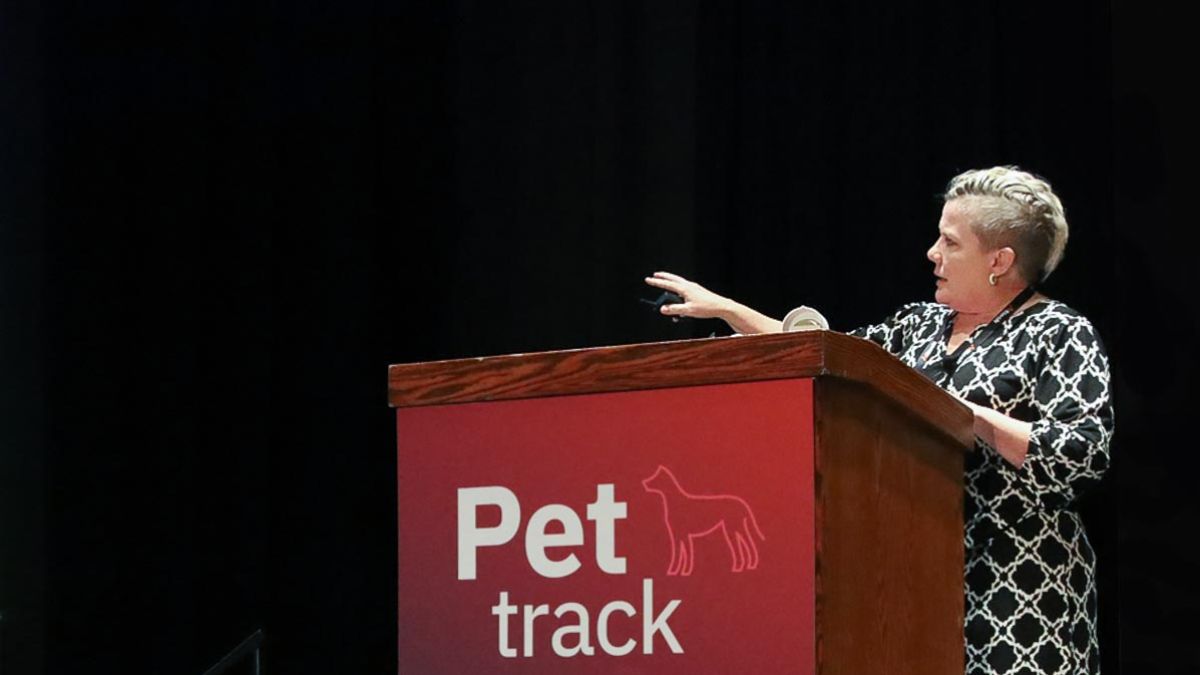
Dr. Joli Jarboe is one of nearly 400 diplomates belonging to the American College of Veterinary Internal Medicine (Neurology) and is renowned for her interest in and support of cannabinoid therapy in veterinary medicine.





















